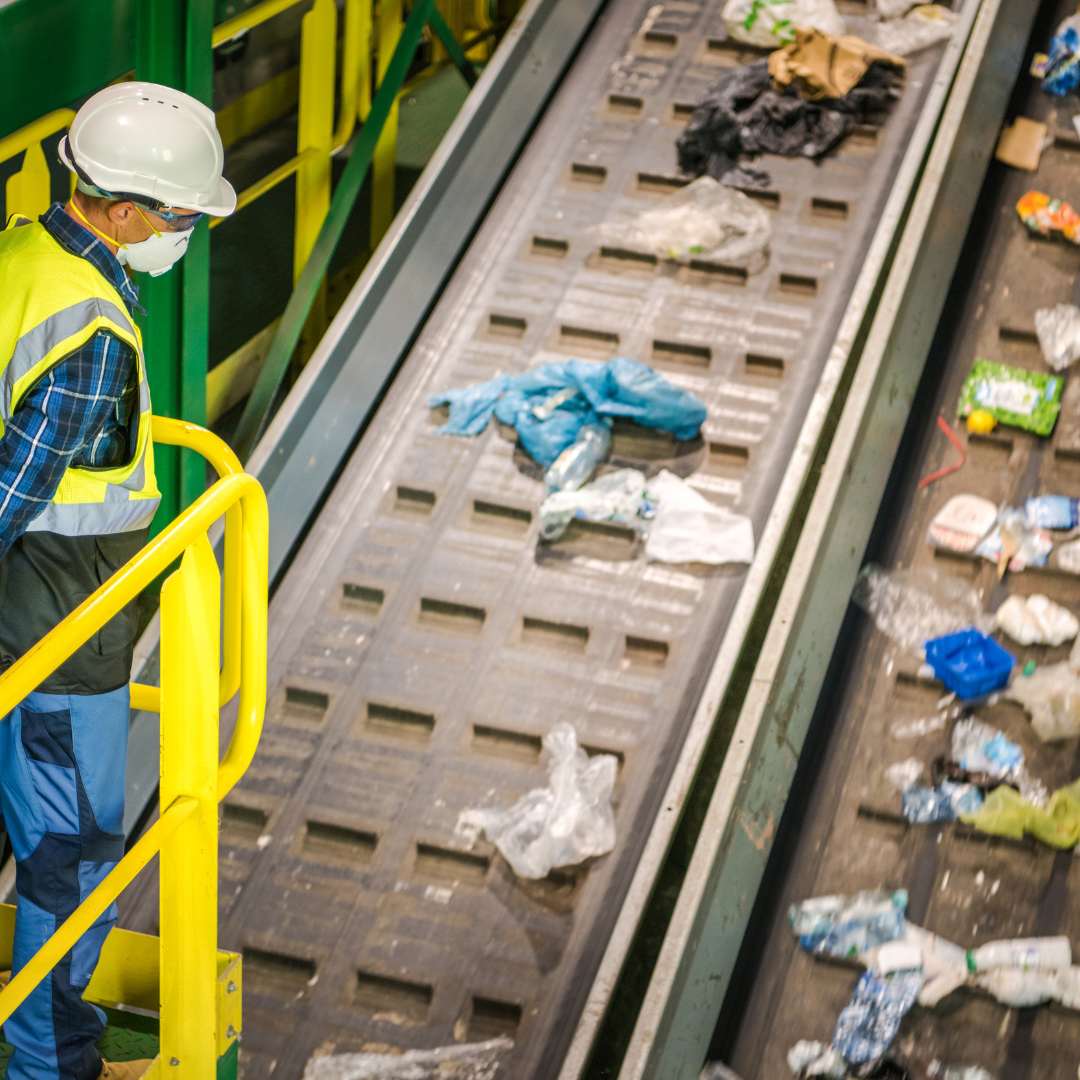Are We Being ‘MRFed
One of the occasional questions that our recycling docents field from our customers is, “What happens to the bins full of mixed recycling?” If we are all doing our duties by separating out aluminum cans, corrugated cardboard, and glass, what still goes into those bins is loose paper, cereal-box cardboard, #1 and #2 plastic, and steel-like cans. But what happens to it? In our case, we have to ship it to the Recology – a Material Recovery Facility (or MRF) in Seattle. Again, if our community has done our part, the loads are less bulky (cardboard is gone) and lighter (the glass is out). What remains still gets recycled, but it has no inherent value to us.
If you want to learn more about MRFs, here are three videos to watch. Each is short, and if you watch them in this order, it makes the most sense. The first is “How Does a Material Recovery Facility Work“. In each of these videos, notice how much plastic film, such as sacks, gets pulled out of the stream—if not, it tends to clog up the machinery and cause shutdowns until it can be removed. Also, each of these videos shows you the automation with cool devices such as puffs of air, magnetic belts, and so on, but also notice how “unautomated” it is—still needs lots of human hands on the alert.
The second video is “GreenWaste Material Recovery Facility (MRF) Tour“. This one shows how cardboard is removed—you got it—by human hands. The final one is “How Recycling Works: Behind the Scenes at the MRF“. It includes a good explanation of how recycling is supposed to work. Once again, notice the search for plastic film and the hands-on work that is involved. We can avoid much of this by doing source separation right here at home. And by early 2024, we’ll be able finally to bale our separated cardboard and aluminum, and maybe even more as we gain experience with the baler.

